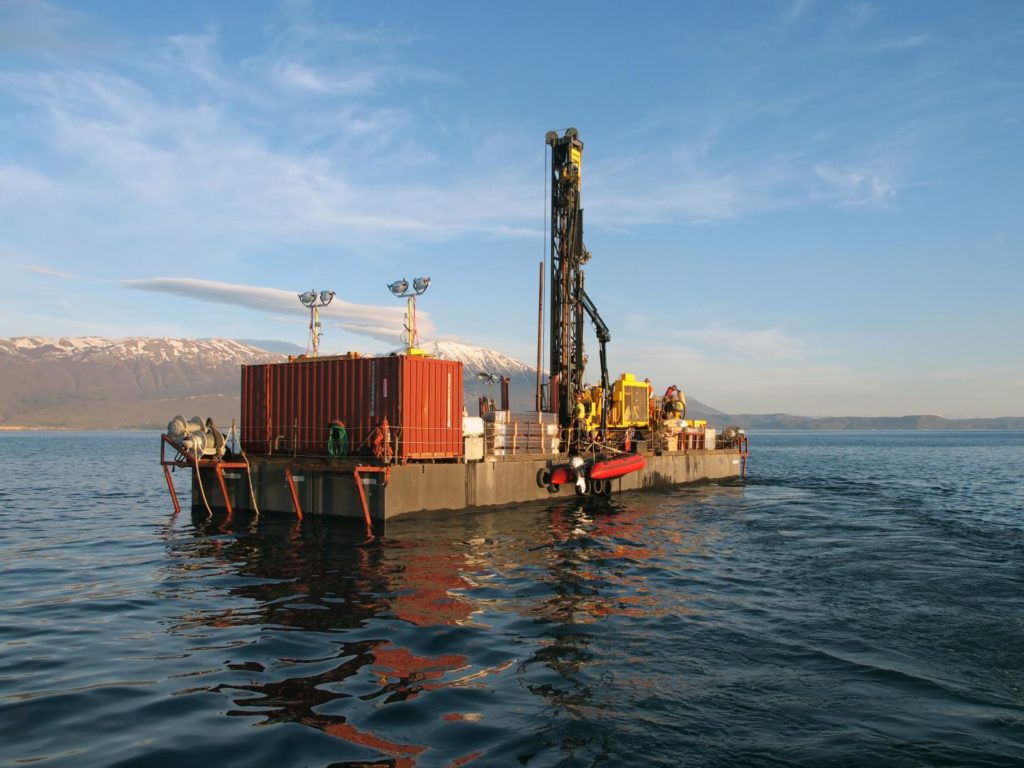A deep drilling project at Lake Ohrid, situated at the border between Albania and North Macedonia and involving 47 researchers from 13 nations, has brought new insights into climate history to light. The team, headed by the geologist Professor Dr Bernd Wagner from the University of Cologne, has now published its findings under the title ‘Mediterranean winter rainfall in phase with African monsoon during past 1.36 million years’ in ‘
Nature
‘.
Lake Ohrid is considered the oldest existing lake in Europe. The project began 15 years ago with first preliminary investigations to determine the age of the lake and better understand the climate history of the Mediterranean region. The deep drilling took place in 2013. With a maximum drilling depth of 568 metres and a water depth of 245 metres, it became one of the most successful lake drillings carried out in the framework of the International Continental Scientific Drilling Program (ICDP). The analysis of the extracted material – the drill cores with their sediment layers – took five years.
‘We have shown that the lake formed exactly 1.36 million years ago and has existed continuously ever since’, the leading geologists Professor Dr Bernd Wagner and Dr Hendrik Vogel (University of Bern) said. ‘We were thrilled when we realized that we had retrieved one of the longest and most complete lake sediment cores from the oldest lake in Europe. Getting the chance to obtain high-resolution regional climate data for a period of over 1.3 million years is the dream of every climate researcher.’
The sediments deposited in the lake allow the scientists to reconstruct the climate history of the region over this period, for example about precipitation. The drilling cores for the first time provide data sets over such long time periods. This can now be compared with data from models. ‘This way, our research helps us to better understand the causes of rain phases and to more accurately assess the effects of climate change for future predictions,’ says Wagner.
The sediment data show a significant increase in winter precipitation in the northern Mediterranean region during the warm seasons. The Mediterranean climate is characterized by strong seasonal contrasts between dry summers and wet winters. Changes in winter rainfall are difficult to reconstruct on time scales of the last million years, Wagner explains. This is partly due to the fact that so far there are few regional hydro-climate records covering several glacial-interglacial cycles with different earth orbital geometries, global ice volume and atmospheric greenhouse gas concentrations.
The data from models of the research project have shown that low pressure increased over the western Mediterranean especially in the autumn months, triggered by an increase in surface temperatures in the Mediterranean. ‘Similar effects could also be caused by current global warming’, says Wagner.
###
The ICDP Drilling Program in Lake Ohrid was funded by the German Research Foundation (DFG), the German Federal Ministry of Education and Research, the University of Cologne and other international donors.
This part of information is sourced from https://www.eurekalert.org/pub_releases/2019-09/uoc-oli090319.php
Bernd Wagner
[email protected]
http://www.uni-koeln.de


